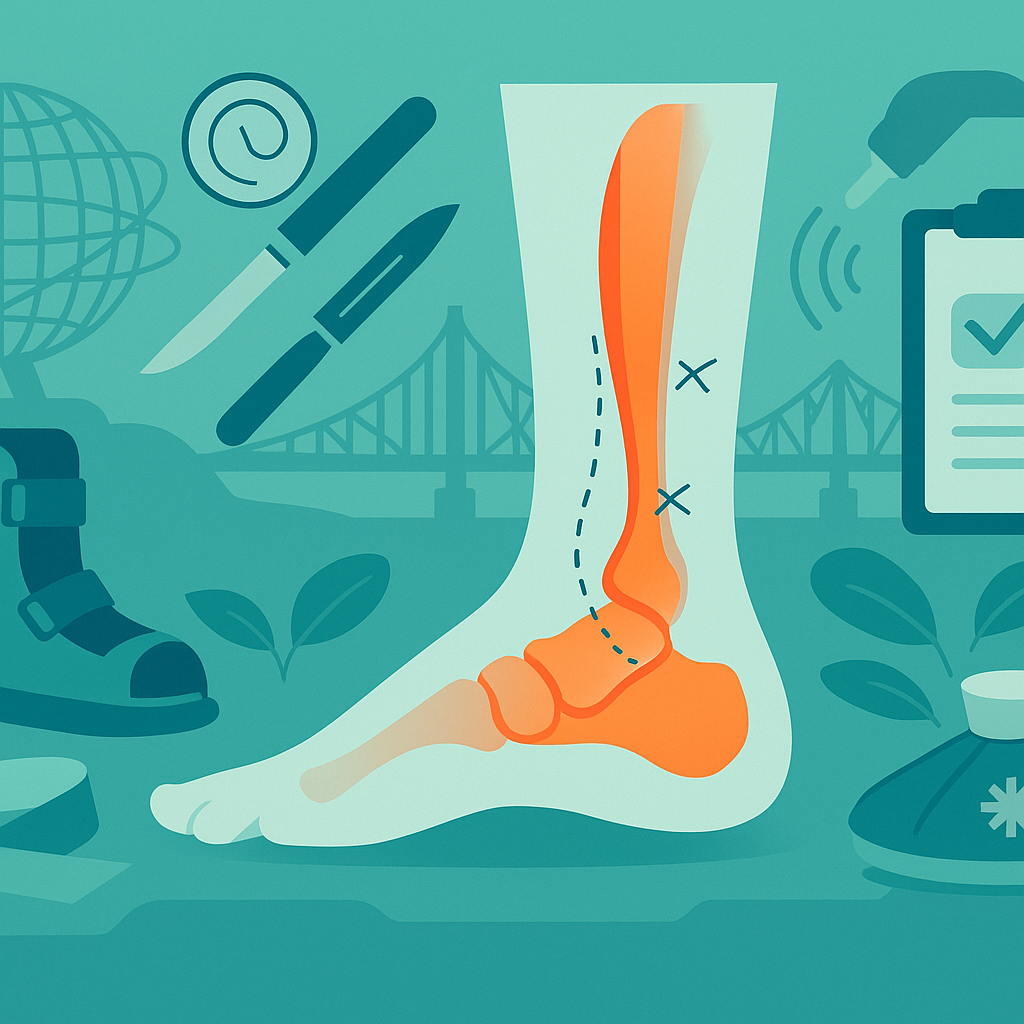Your Achilles tendon runs along the back of your lower leg, connecting your calf to your heel with a fibrous, sturdy cord. The largest tendon in your body, it effectively allows you to do any exercise involving your lower legs and feet, including jumping, running and even walking.
Although it’s one of the strongest tendons in your body, you can damage it. The tendon can rupture or tear from an unexpected blow or awkward pivot. Participating in some physical sports, especially those that require lateral movement, increases your chance of injury. Additionally, repetitive motion over time leads to deterioration of the tendon.
You can prevent the need for Achilles tendon surgery by stretching before any sport or vigorous activity. Other tips to avoid an Achilles tendon injury include:
- Slow down
- Focus on technique
- Build up gradually

Symptoms of an Achilles Tendon Injury
Determining the severity of your injury — and whether it’s a tear or rupture — helps your podiatrist in Queens decide if a non-surgical or surgical treatment is best for you. At the Medex Diagnostic and Treatment Center, surgical options are always the last resort, used only when nothing else has been effective.
If a tear or rupture occurs as a repetitive motion injury, you may have no symptoms. Most likely, however, you’ll notice symptoms such as:
- A pop or snapping sound at the time of the injury
- Often severe pain at your heel or around your ankle
- Being unable to push off the injured leg
- An affected gait or movement of the foot
The Main Causes and Risk Factors for an Achilles Tendon Injury
You can injure your Achilles tendon if you fall, step in a hole or too rapidly increase the intensity of your exercise, training or sport, especially if it involves jumping. You may be more susceptible to injuries if you belong to certain at-risk groups, including:
• Gender. Men play the full-contact sports more than women.
• Age. If you’re between 30 and 40, you’re more likely to be involved in high-impact or stress-inducing athletics. You’re also in the beginning stages of aging, where wear and tear start to take its toll on your body.
• Obesity. If you struggle with weight gain or are obese, you’re placing significant strain on your Achilles tendon.
• Exercise habits. Weekend warriors are recreational athletes who play hard without undergoing the supporting exercise and training regimen that prevents injury.
• Certain medications. Some antibiotics and steroid injections weaken tendons. They may contribute to a rupture.
What Can You Expect During Achilles Tendon Surgery?
You’re in safe, experienced hands at the Medex Diagnostic and Treatment Center. Your podiatrist and orthopedic surgeon specialize in performing successful Achilles tendon surgery. You can expect a series of steps that include:
- Sedation prior to surgery. You’ll sleep through the surgery, which takes one to three hours. While you’re sedated, your breathing, blood pressure and heart rate are carefully monitored.
- The appropriate technique. Depending on the severity of your injury, your Medex surgeon may use minimally invasive techniques, which requires a small incision and the use of a tiny camera. For a ruptured tendon, your surgeon may need a larger incision to access the tendon.
- Repairing the tendon. After moving the skin, calf muscle and tendon sheath aside, your surgeon removes any damaged tissue. The tendon is secured with either state-of-the-art sutures or a graft, using another piece of tendon from a different part of your body or from donated tissue.
- Closing the incision. After making any other necessary repairs, the surgeon sews the layers of muscle and skin closed with sutures.
Aftercare for Achilles Tendon Surgery
Once the sedative wears off, which may take a few hours, you’re released to recuperate at home. It’s a benefit of an outpatient procedure. Pain medications alleviate your discomfort for the first few days, and a specialized splint protects your heel, foot and lower leg. Keep your leg elevated as much as possible to reduce any swelling. You’re encouraged to walk, using crutches to keep your weight off the leg while it heals.
After ten days, your Medex podiatrist removes your sutures and replaces your splint with either a hard cast or specialized removable boot. You receive wound care instructions and strengthening exercises. Your doctor may prescribe physical therapy sessions to enhance your healing and decrease your recovery time. Contact the multi-specialty practice in Queens, New York for an evaluation.
